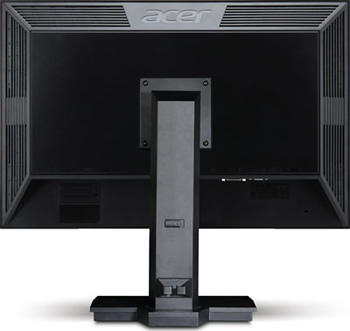 Acer has just released a brand-new IPS display that not only sports some decent features, but with an MSRP of $329, sports a great price as well. The 24-inch LCD is being marketed as a commercial offering and as such, bucks the long-held view that business equipment is always more expensive.
Acer has just released a brand-new IPS display that not only sports some decent features, but with an MSRP of $329, sports a great price as well. The 24-inch LCD is being marketed as a commercial offering and as such, bucks the long-held view that business equipment is always more expensive.
If you aren't aware, IPS (in-plane switching) panels are a competing technology to TN panels. Although twisted nematic displays are by far the most common because of how cheaply they can be produced, IPS LCDs offer one distinct advantage over TN panels: far superior viewing angles with minimal color shifting.
With the B243PWL, Acer joins Dell in selling affordable IPS displays. In 2010, Dell announced a line of inexpensive IPS displays ranging from 21.5 to 23 inches while just last year, the company began offering its U2412M -- a 24-inch IPS monitor under its premium UltraSharp brand -- for $399 MSRP. That same LCD is now selling for $288.
The 24-inch Acer B243PWL offers full 1080p with a resolution of 1920x1200 and a supposed 100,000,000:1 contrast ratio (dynamic, of course) with LED backlighting. For the price, this monitor's adjustability might surprise you. The B243PWL features tilt, swivel and height adjustment. The IPS panel also ships with DisplayPort, VGA, DVI connectivity (sorry, no HDMI) and enjoys a three-year warranty.
As an aside, has anyone else noticed larger displays with an aspect ratio of 16:10 are becoming increasingly difficult to find? Most LCDs seem to be 16:9 anymore @ 1920x1080 instead of 1920x1200. In fact, a quick search on Newegg reveals just 19 LCD with 1920x1200 versus 243 that weigh in with 1920x1080.